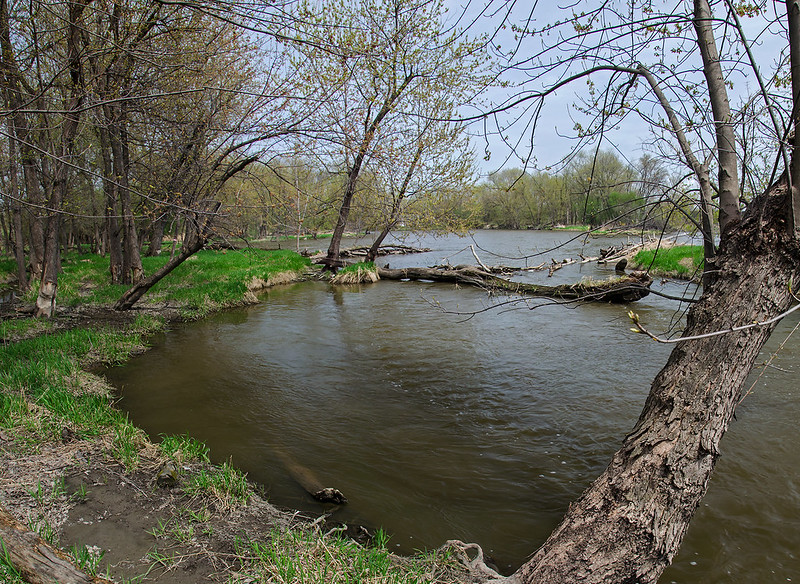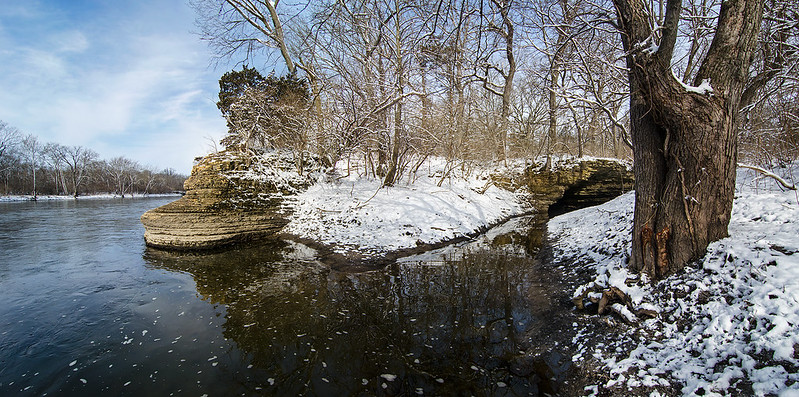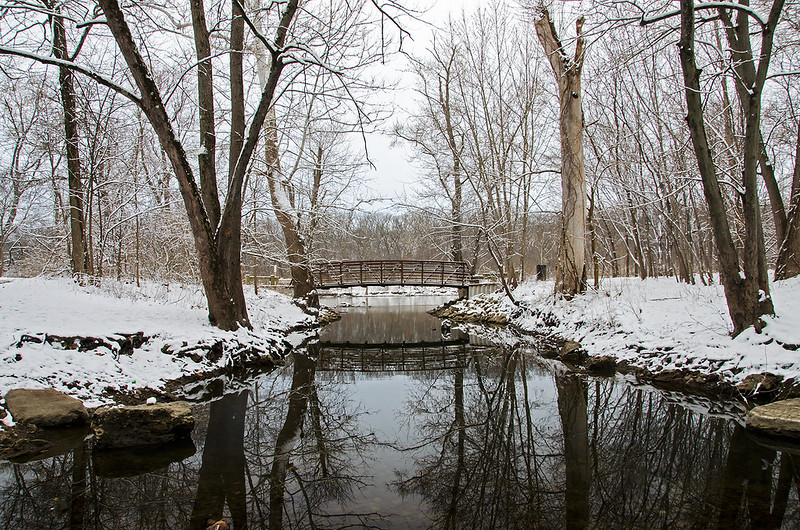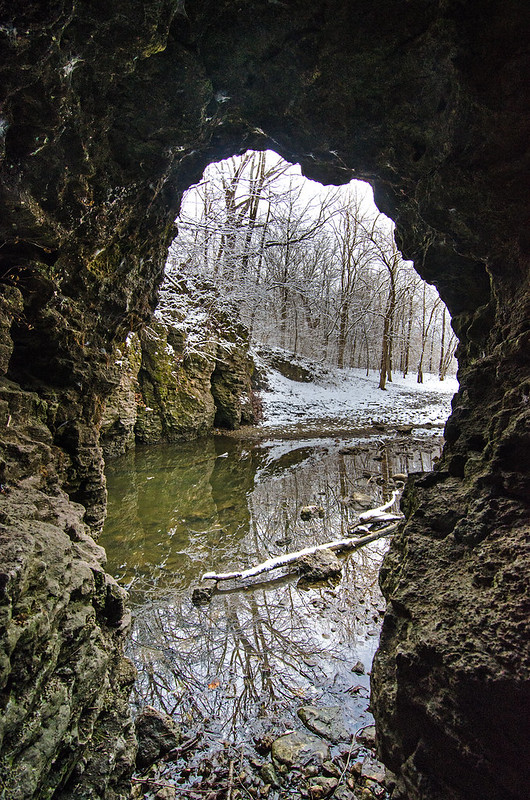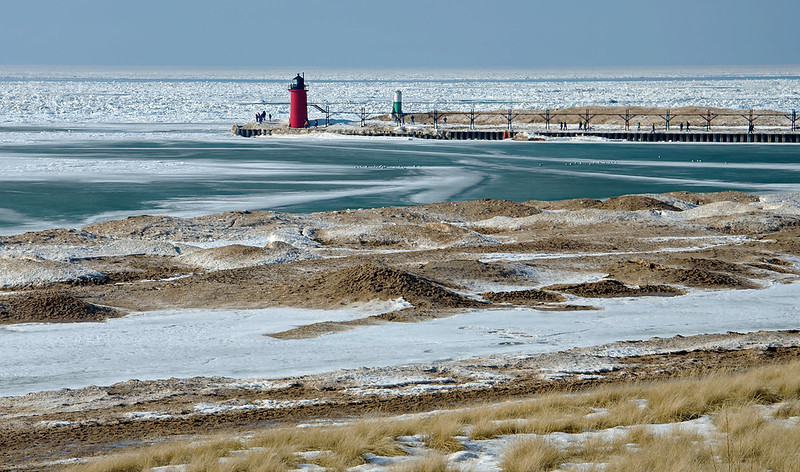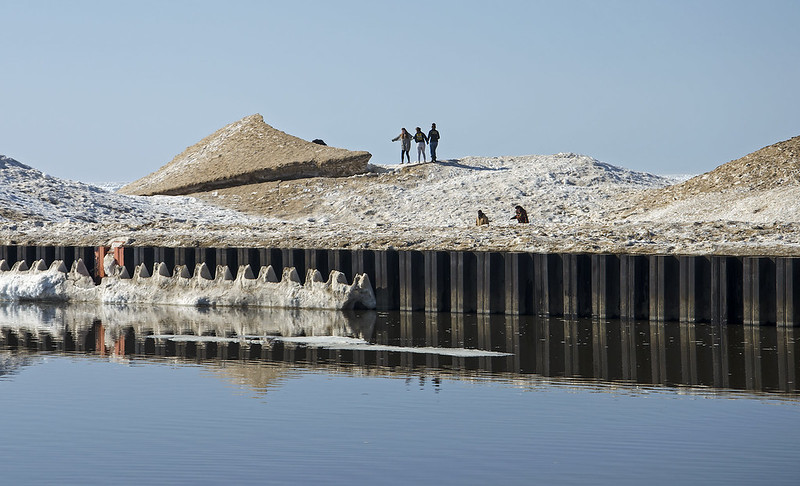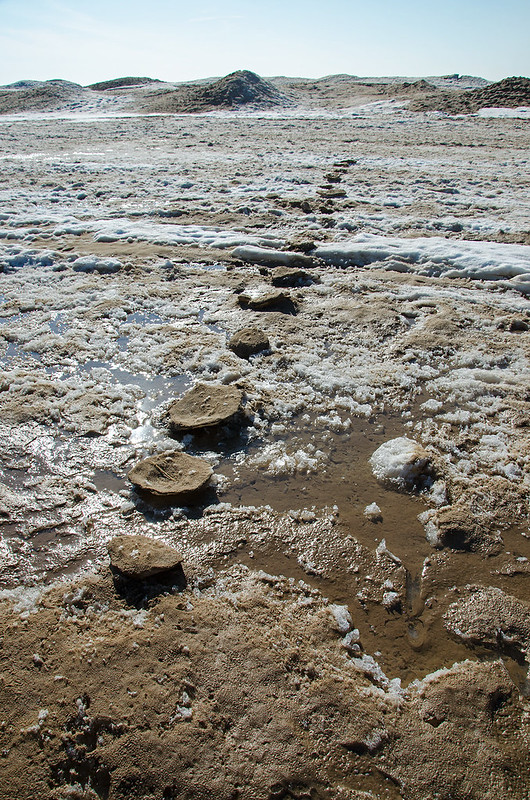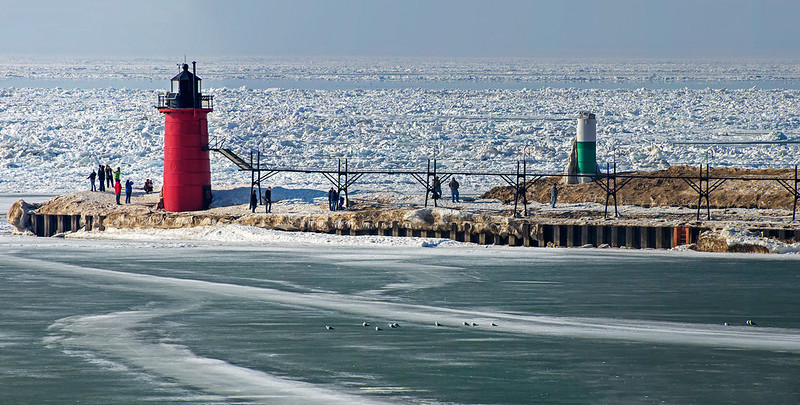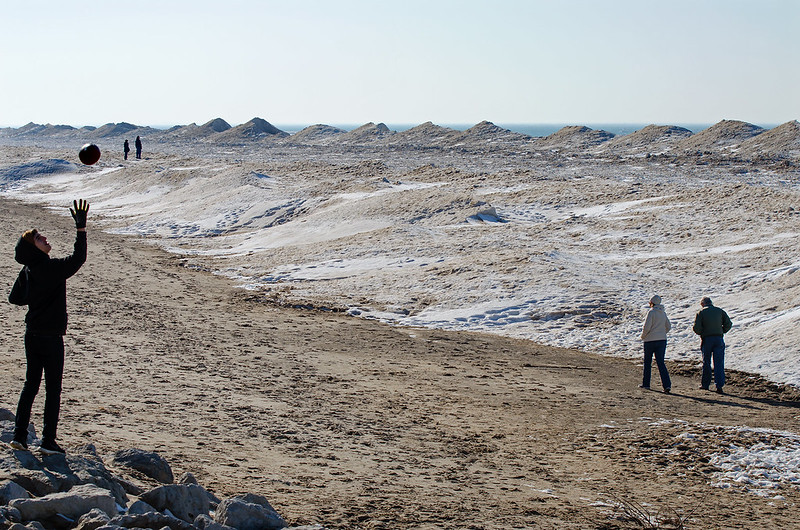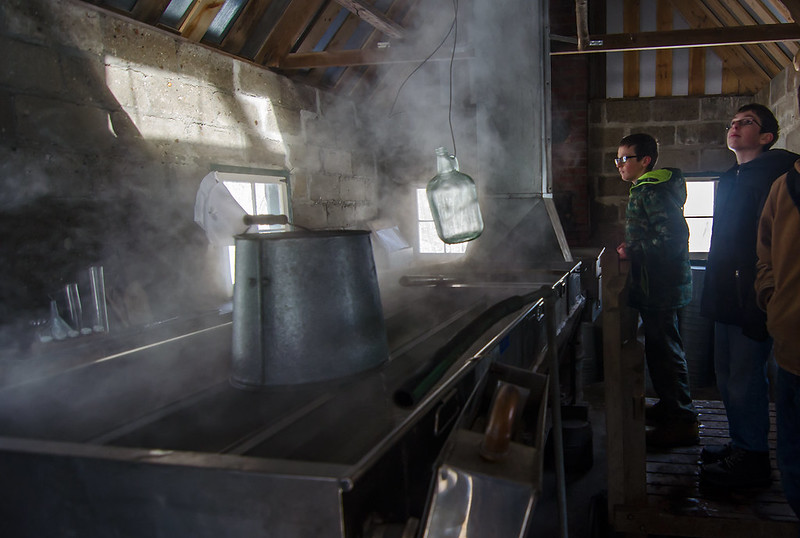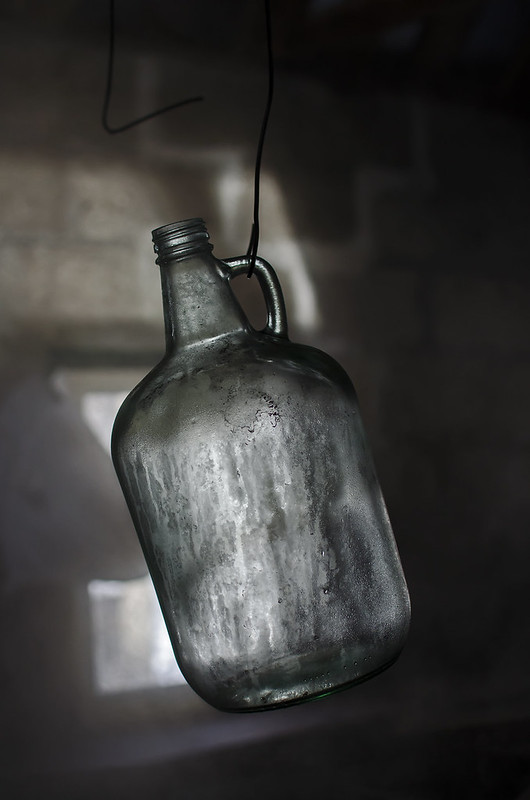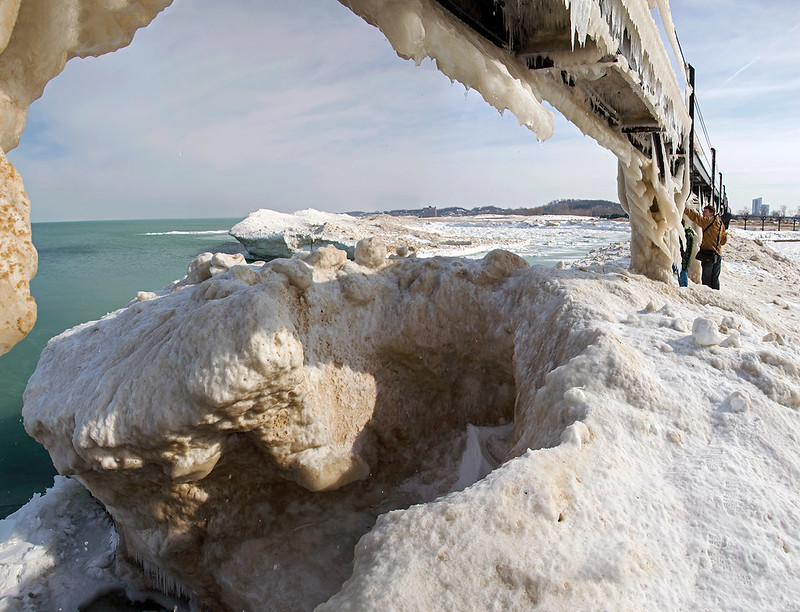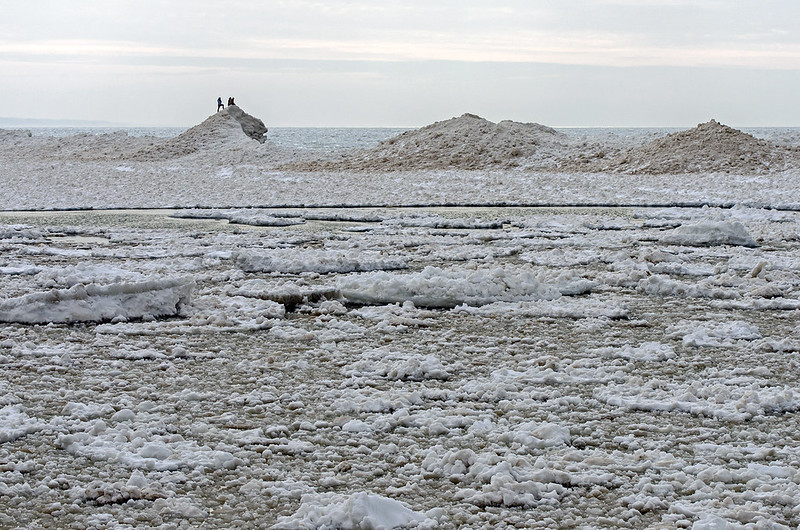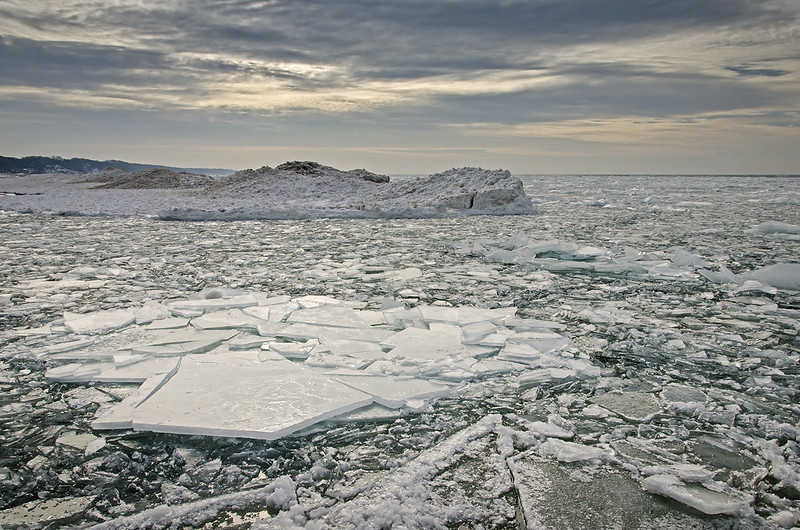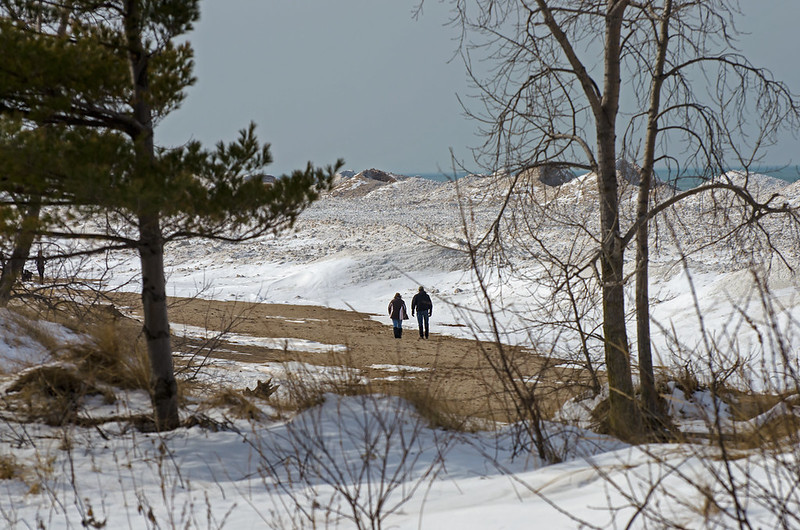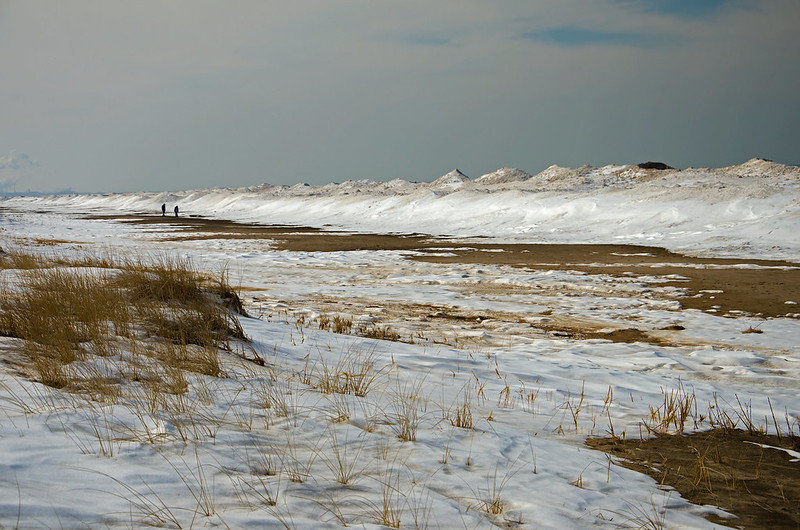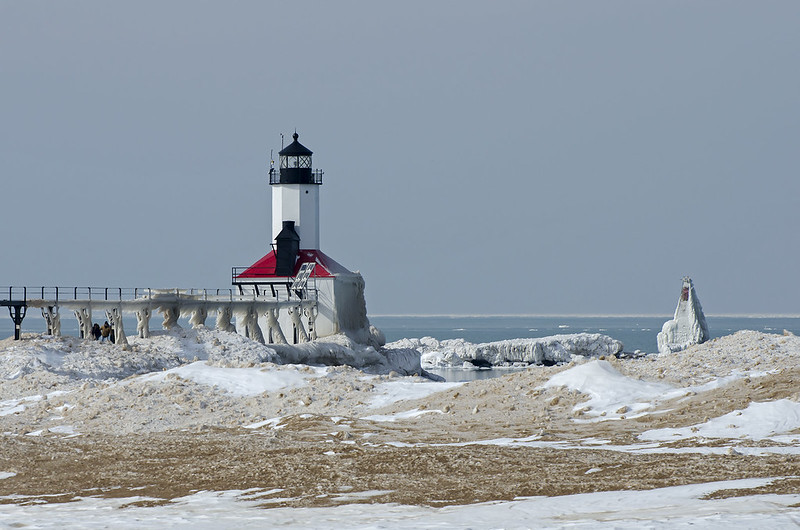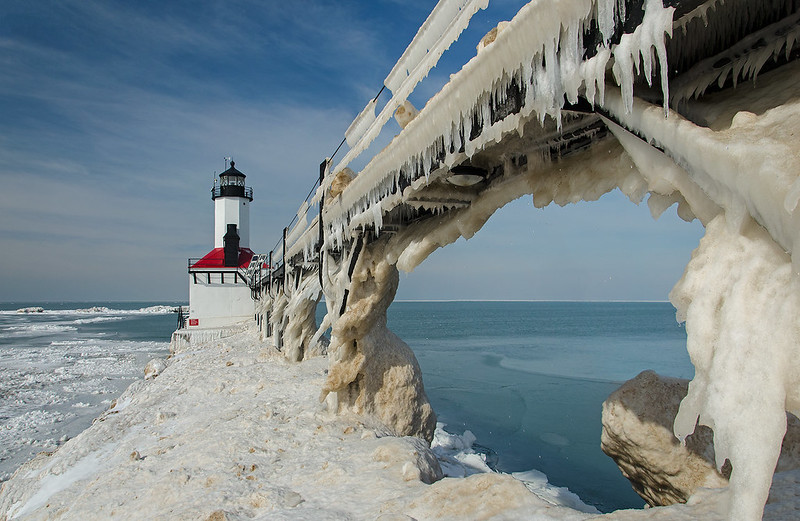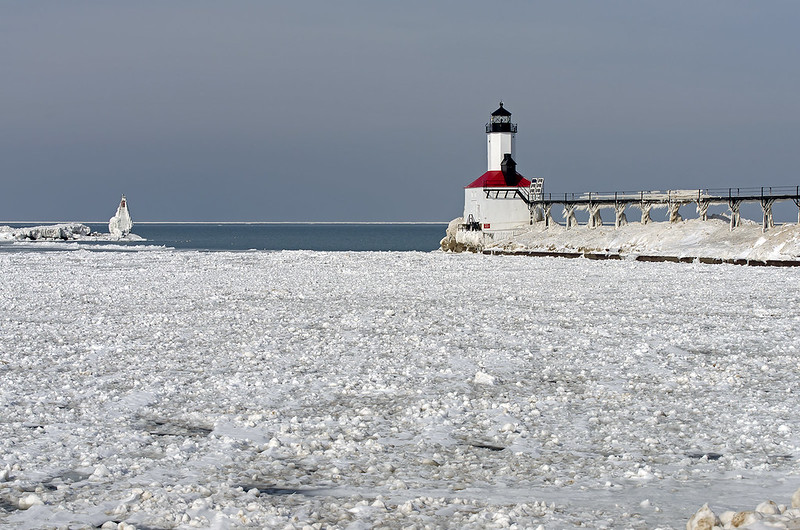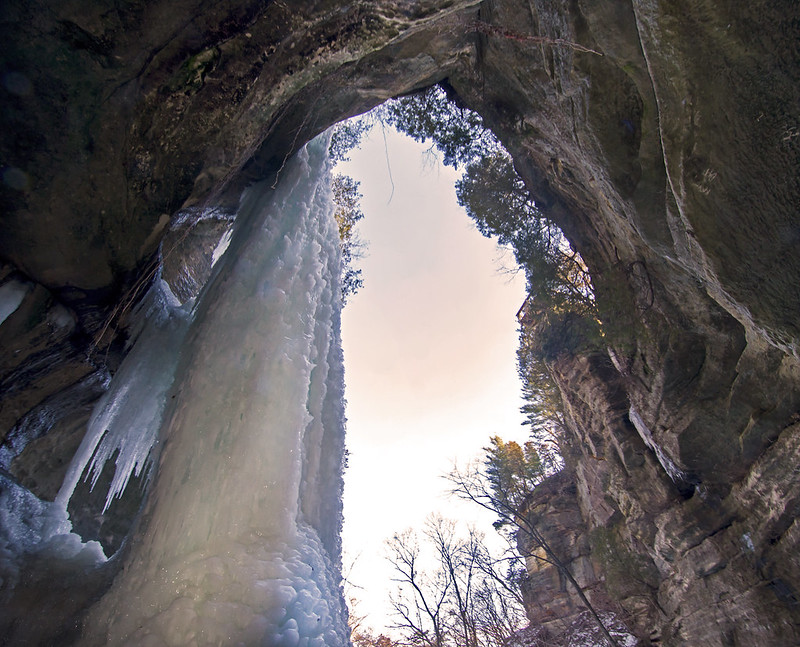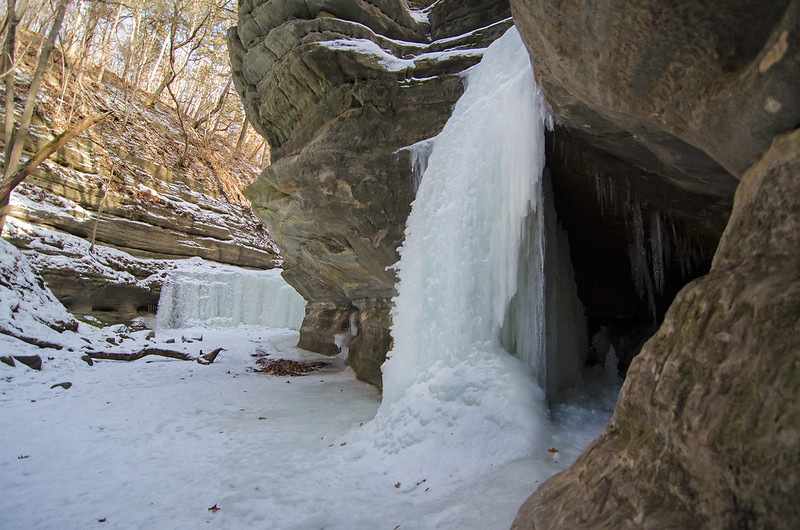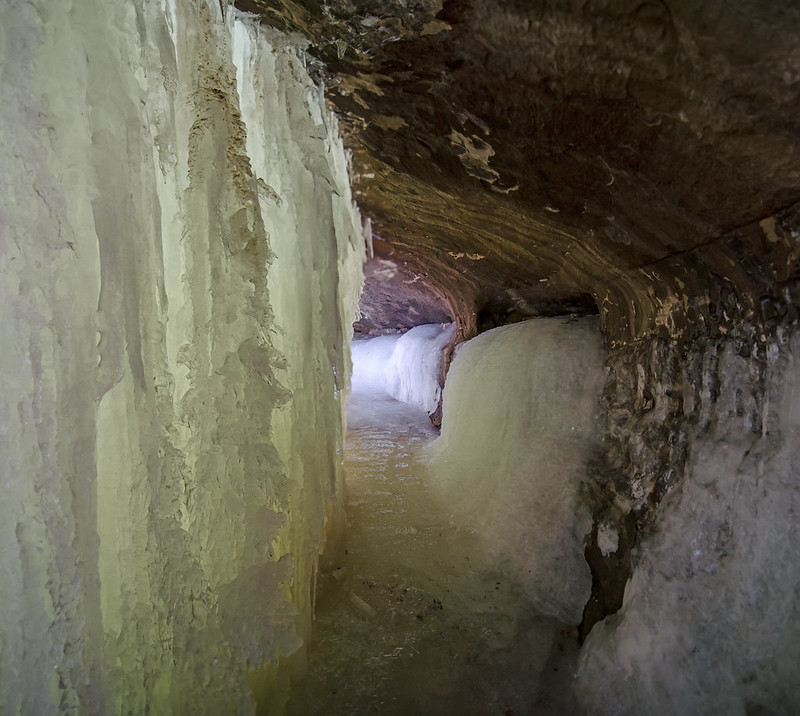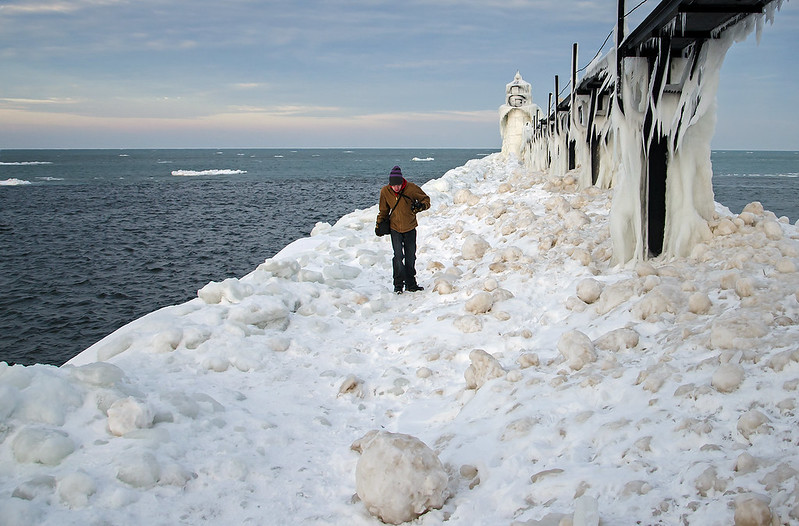
The reason the lighthouses are difficult and dangerous to reach during the winter, is the same reason they are relatively safe to access. Sounds like a bit of a paradox, but ice is the cause and solution to safely accessing the piers on Lake Michigan. Of course, the ice is what draws hundreds of people to the lighthouses each day. This can be deadly when a smooth layer forms on the concrete surfaces of piers and seawalls. But when the ice is rolled into boulders by heavy wave action, and piled up onto the pier by the waves, a deep, textured surface is created, allowing your feet to plant themselves in the small valleys between the boulders, preventing slipping.
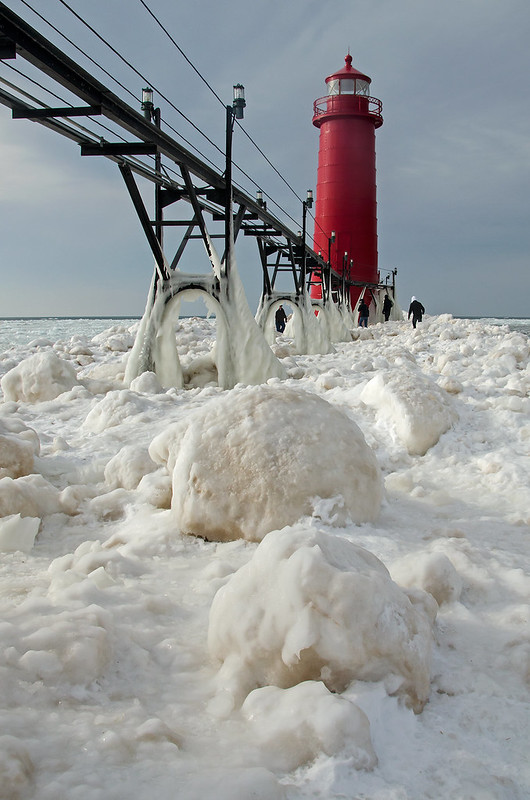
The walk is a bit more difficult, as one needs to tread on uneven, hilly surfaces, but the danger of slipping, falling, and continuing to slide into the freezing water is all but eliminated.
Of course, care must also be taken in this situation, a trip on an ice boulder can send you falling into Lake Michigan. Plus, it's often difficult to discern the shelf ice from the ice on the concrete pier, and a person can easily continue walking onto frozen Lake Michigan - a dangerous mistake.
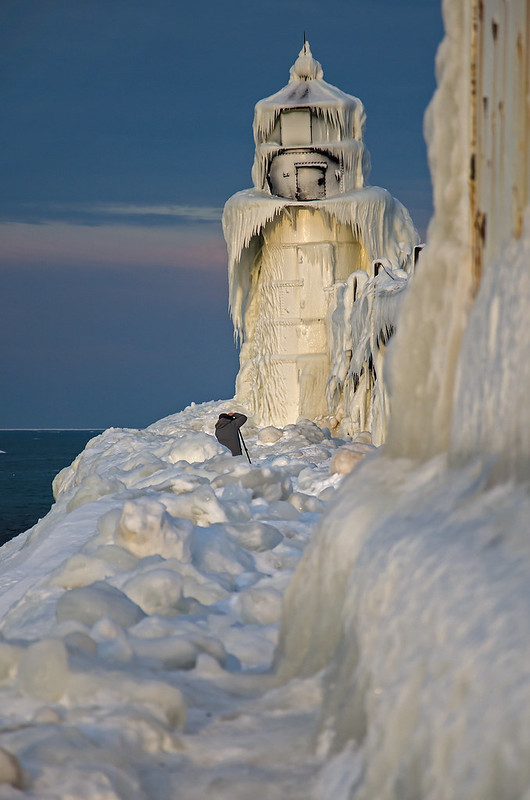
Above, a photographer is dwarfed by the piles of ice on the pier.
The mounds of ice provide a great opportunity to get up almost as high as the keeper's catwalk. These catwalks were constructed about 10 feet above the pier, to keep the workers away from high waves that could wash them into the lake. Thanks to the ice, were able to see the catwalk close up.
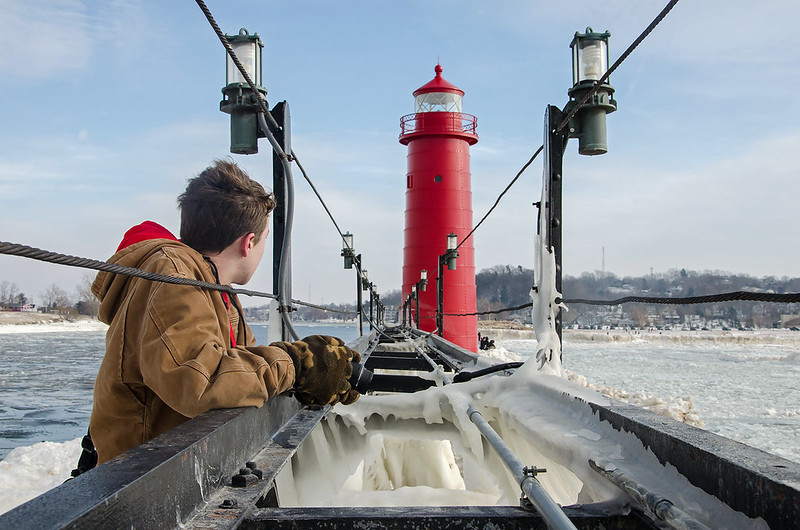
But once on the pier, the view unfolds. One cannot truly experience the extent of the ice until it's within their reach Dwarfed by the piles of ice boulders and the ice formations created by Lake Michigan's waves, you get a real sense of the power of the Great Lakes - frozen in place for close examination.

